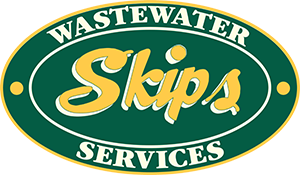We often disregard the science behind simple tools that aid us in our daily lives. For example, the average person does not understand how a septic system works. Do you ever wonder what happens to the water when you flush the toilet or the food you put through a garbage disposal? There is a complex biological process that goes behind getting the wastewater from your home into your septic tank and then back to where it belongs in our groundwater system.
The waste starts by making its way through a home’s plumbing and eventually the main inlet line connected to the septic tank, which is a water-tight container typically made of concrete or plastic. The wastewater in the tank separates into three layers. The top layer, scum, is comprised of materials that are lighter than water, including oil and grease, which are unable to be naturally broken down. The solids settle down to the bottom of the tank and form the layer known as sludge. The middle layer is simply liquid wastewater and is referred to as effluent. T-shaped outlet baffles inside the tank direct the flow of effluent and prevent the sludge and scum from leaving the tank.

The partially pre-treated effluent leaves the tank and enters one or more distribution boxes, which allow the liquid to maintain an even flow to the third and final piece of the system, the leach field. The leach field, also known as drainfield, consists of perforated pipes laid in gravel-filled trenches or other modern leaching chamber products. Effluent trickles out of the pipes into the soil where microorganisms filter and cleanse the liquid to a safe level prior to re-entering the groundwater system.
Remember, only the effluent is supposed to reach the leach field, so the solids must be periodically pumped out. Otherwise, the solids may accumulate to the point where they flow out of the tank, leading to backups and most importantly, system failure. Here at Skips Wastewater Services, we recommend that your tank be pumped about every one to two years. However, this heavily depends on a variety of factors such as tank volume, household size, and age of the system. Regular and frequent maintenance ensures proper performance and prolongs the life of your system.
We offer pumpouts on any size tank, commercial or residential. Does your septic tank need to be serviced? Schedule an appointment with Skips Wastewater Services today!





